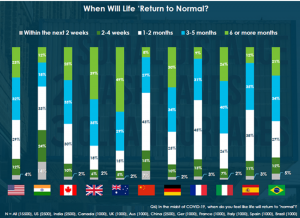In the past hospitals have looked to medical companies to help them improve patient care.
Are these companies able to help meet hospital’s cost reduction challenges as well?
A Changing Landscape
The healthcare market is undergoing dramatic change. Health care providers are under extreme pressure to reduce costs and improve care. The old business paradigms no longer apply.
Hospitals are responding to these pressures through strategic mergers, employing physicians, working directly with insurers and sharing the risks of health coverage. From 2009 to 2012 hospital mergers doubled. In the last year, the number of physicians employed by hospitals rose by 6%.
A Changing Purchasing Process
Now hospitals are evaluating expenditures in new ways that are having a profound impact on suppliers. Hospitals’ Value Assessment Committees (VAC) are reviewing product purchases based on both clinical need and cost efficiency. What was once a physician decision is now a physician recommendation to the VAC where cost is weighed heavily.
VACs include clinicians, nurses and hospital administrators (Finance, Purchasing, CEO/CFOs). They evaluate a product based on clinical benefit, cost-effectiveness, and patient outcomes. VAC and hospital C-Suite executives are becoming the gatekeepers for new technology and medical device purchase.
A Changing Value Proposition
So, how does this sea change impact the way medical companies position their products for sale to hospitals?
Companies must present a highly compelling value proposition by making a strong case for positively affecting one of these areas: patient outcomes, length of hospital stay, OR turnaround time, complication rate, safety, accuracy, ease of use, or return on investment.
Because hospitals have different focuses, cultures, management and revenue goals, it is important to know what value proposition will resonate most effectively. Medical companies will want to use the most effective messages in positioning their product.
A Changing Research Model
For many years, medical companies have been conducting research with physicians and medical professionals. Now, these companies must also understand how VAC and C-Suite executives will evaluate their products.
Voice of the Customer research is now more challenging. Reaching out to C-Suite executives requires a research team that has experience in the new paradigm. The research team must be prepared to discuss with CEO/CFOs these new and different value propositions.
The Medical Market Consulting team has been conducting research with hospital C-Suite executives for the past 5 years and has developed proven methods for obtaining answers to the most complex value proposition questions.
In total, MMC has been providing consulting services to medical companies for more than 20 years, specializing in Voice of the Customer research, new product launch, business development and strategic planning. When developing your value propositions, you will want a seasoned research team to help you identify the messages which will be most effective with the C-Suite executives.
Please contact MMC to discuss how we can help you develop your value propositions.
Call Barbara Turkington at 978-582-7072 or email medical.market@comcast.net.
References:
2013 Physician Outlook and Practice Trends, Jackson Healthcare. http://www.jacksonhealthcare.com/media/191888/2013physiciantrends-void_ebk0513.pdf
The NY Times, “A Wave of Hospital Mergers”, August 12, 2013. http://www.nytimes.com/interactive/2013/08/13/business/A-Wave-of-Hospital-Mergers.html
The future of Healthcare; “Wall Street Journal”. http://online.wsj.com/news/articles/SB10001424052970204319004577084553869990554






